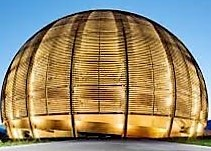Speaker
Description
The K600 magnetic spectrometer and the CAKE silicon detector array form a powerful tool for coincidence measurements in many nuclear physics measurements including nuclear astrophysics. These instruments have been used, among others, in studies measuring proton decays from $\alpha$-unbound states in $^{22}$Mg through the $^{24}$Mg(p,t)$^{22}$Mg reaction to study the $^{18}$Ne($\alpha$,p)$^{21}$Na cross section relevant in type-I X-ray bursts (XRBs). The thermonuclear reaction rate of $^{18}$Ne($\alpha$,p)$^{21}$Na is one of the important rates that affect the behaviour of the XRB lightcurve [1]. This talk will examine the $^{24}$Mg(p,t)$^{22}$Mg experiment that was performed at iThemba LABS, Cape Town and discuss future experiments with the $^{28}$Si(p,t)$^{26}$Si reaction to study proton decays from $\alpha$-unbound states in $^{26}$Si to study the cross section and thermonuclear reaction rate of $^{22}$Mg($\alpha$,p)$^{25}$Al and its influence on type-I XRBs [2-4]. The coincidence measurements that can be performed using the K600 and the CAKE also include reactions relevant to classical novae such as $^{21}$Na(p,$\gamma$)$^{22}$Mg and $^{30}$P(p,$\gamma$)$^{31}$S. These experiments will also be discussed in this talk.
